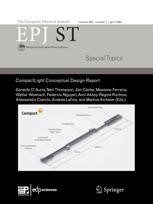An exciting era for ultrafast science in France
Progress across five scientific topics currently being investigated by the French scientific network on ultrafast phenomena highlight both a rapid pace of discovery and emerging new directions of research.
New York | Heidelberg, 15 December 2023
 From biochemistry to quantum mechanics, ultrafast phenomena can be found across a broad array of scientific fields. Now the subject of a rapidly expanding area of research, they describe how matter behaves over timescales ranging from picoseconds (thousandths of a nanosecond), down to attoseconds (billionths of a nanosecond).
From biochemistry to quantum mechanics, ultrafast phenomena can be found across a broad array of scientific fields. Now the subject of a rapidly expanding area of research, they describe how matter behaves over timescales ranging from picoseconds (thousandths of a nanosecond), down to attoseconds (billionths of a nanosecond).
Today, ultrafast processes are studied by a global community of scientists, who are dedicated to understanding the inner workings of matter, and exploring how they can be controlled and exploited for novel applications. In 2023, three researchers were awarded the Nobel Prize in Physics for their contribution to attosecond laser technology: clearly emphasising the growing relevance of the field.
The frontiers of this research are being pushed ever further by cutting-edge advances in technology, which allow researchers to generate intense, ultrafast pulses of high-energy photons (including x-rays and extreme ultraviolet light), and massive particles (including protons and electrons).
These advances are also being combined with the latest theoretical approaches to understanding how light and particle beams interact with matter, enabling researchers to use them as more accurate probes of ultrafast processes.
Altogether, this progress has established new links across a diverse range of scientific fields where ultrafast phenomena play an important role: including fundamental physics, chemistry, biology, and materials science.
In recent years, France has firmly established itself as a global leader in the ultrafast science community. A special Issue of EPJ Special Topics (EPJ ST) is dedicated to the research of the French scientific network on ultrafast phenomena (GDR UP), and provides an overview of its current activities in French laboratories.
Now comprising over 800 members, spread between more than 50 labs across France, the GDR UP was created in 2016, and renewed for a further five years in 2021. Supported by the French National Centre for Scientific Research (CNRS), it draws together every French research team with an interest in ultrafast phenomena, both from experimental and theoretical perspectives.
In order to encompass the broad scope of the GDR UP’s research, the studies detailed in this special issue are structured into five scientific topics. The first of these topics is attosecond science: subject of the 2023 Nobel Prize. Since atomic electrons complete a full orbit around their host nuclei on attosecond timescales, progress in this field is enabling researchers to study the unique dynamics of electrons within regions smaller than the width of a single atom.
Secondly, measurements of gases of atoms or molecules, made using intense and energetic ultrashort laser pulses, are a valuable probe of the inherent characteristics of more complex molecular systems. Thirdly, the fields of femtochemistry and femtobiology explore ultrafast reactions involving complex molecules and biomolecules in solid or liquid states, often induced by light.
Next, studies of ultrafast dynamics in materials and nanostructures concern the ability of researchers to control and monitor the properties of materials. They are now increasingly benefitting from the availability of ultrashort light pulses extending across a broad range of wavelengths.
The final section explores the latest progress towards ‘secondary’ sources of electrons, protons, and photons – themselves produced by ultrashort laser beams – which are opening up a whole host of further possibilities in research.
Together, the five topics covered in this special issue paint a clear picture of the dynamic and rapidly advancing pace of ultrafast science in France, and highlight the emerging directions of research which may soon lead to significant scientific and technological advances in the coming years.
All articles are available here and are freely accessible until 14 February 2024.
Reference: Editorial by Lionel Poisson & Franck Lépine ”Ultrafast phenomena from attosecond to picosecond timescales: theory and experiments.” Eur. Phys. J. Spec. Top. 232, 1995–2000 (2023). https://doi.org/10.1140/epjs/s11734-023-00966-7
Further Information
For more information visit: www.epj.org
Services for Journalists
The full-text of the article is available here.
Contact
Sabine Lehr | Springer | Physics Editorial Department
tel +49-6221-487-8336 | sabine.lehr@springer.com
